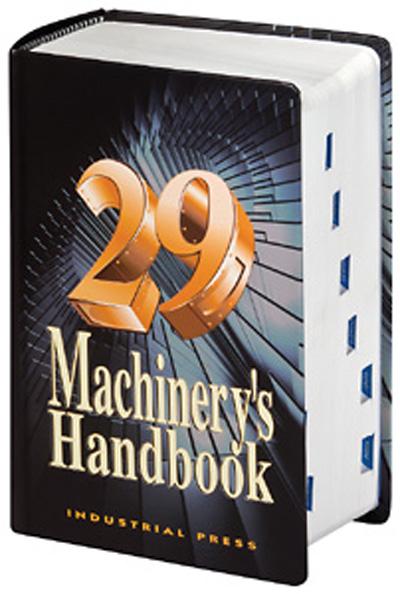
Industrial Press is celebrating the 100th year anniversary of the world-renown Machinery's Handbook by offering, for the first time ever, an eBook edition on the company's new eBookstore. The 29th edition of the Machinery's Handbook is the most comprehensive edition to-date with the most current techniques, data and knowledge from the leading experts in the mechanical and manufacturing science industry.
With the eBook, tradesmen now have the ease of referencing this valuable tool right at their fingertips at any time. This extraordinarily book has been crafted to give mechanical and manufacturing engineers, designers, draftspersons, toolmakers, machinists and CNC specialist content of knowledge and data in reference form, according to the publisher.
This user-friendly book provides readers a complete illustration of everything they need to know about machining. Readers can choose between a print book or eBook platform. The 29th edition features chapters on mathematics, mechanics, materials, measuring, tool making, manufacturing, threading, gears and machine elements, combined with excerpts from ANSI standards. The eBook platform offers readers the ability to bookmark, page cross-reference, index and calculate math equations on their electronic devise of choice.
Contact Details
Related Glossary Terms
- computer numerical control ( CNC)
computer numerical control ( CNC)
Microprocessor-based controller dedicated to a machine tool that permits the creation or modification of parts. Programmed numerical control activates the machine’s servos and spindle drives and controls the various machining operations. See DNC, direct numerical control; NC, numerical control.
- threading
threading
Process of both external (e.g., thread milling) and internal (e.g., tapping, thread milling) cutting, turning and rolling of threads into particular material. Standardized specifications are available to determine the desired results of the threading process. Numerous thread-series designations are written for specific applications. Threading often is performed on a lathe. Specifications such as thread height are critical in determining the strength of the threads. The material used is taken into consideration in determining the expected results of any particular application for that threaded piece. In external threading, a calculated depth is required as well as a particular angle to the cut. To perform internal threading, the exact diameter to bore the hole is critical before threading. The threads are distinguished from one another by the amount of tolerance and/or allowance that is specified. See turning.
